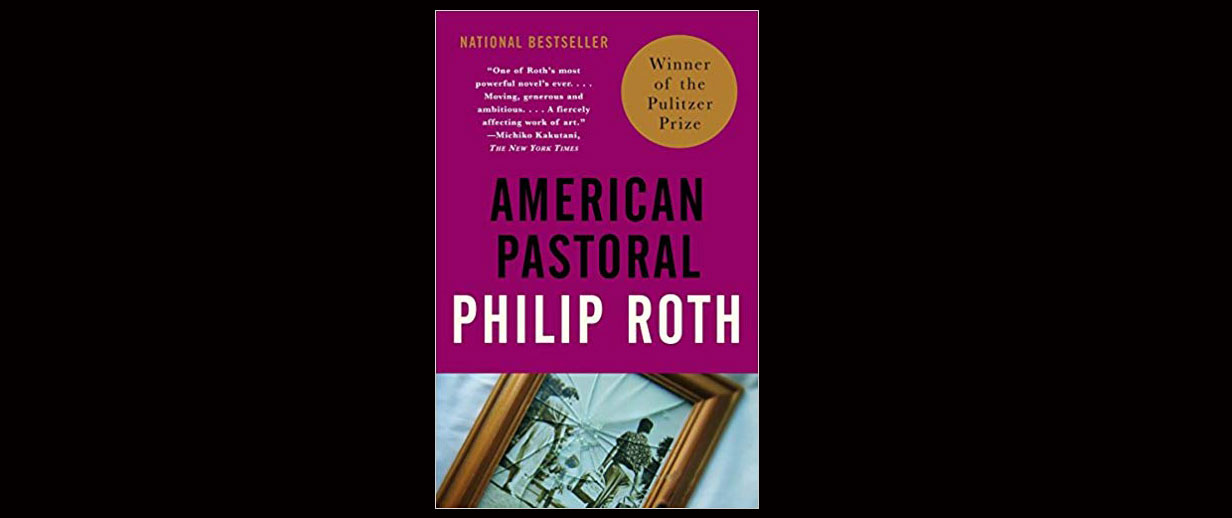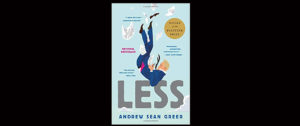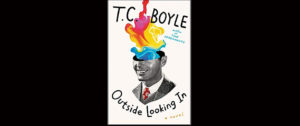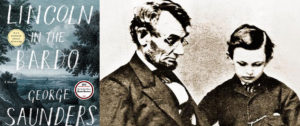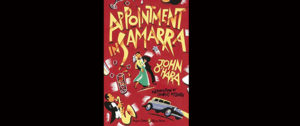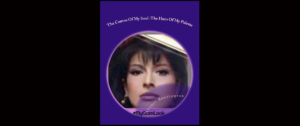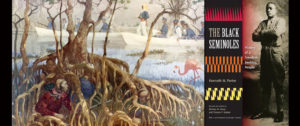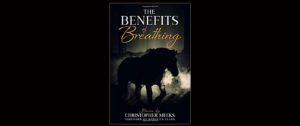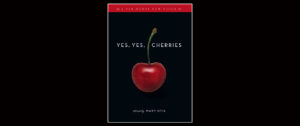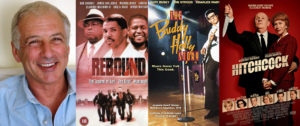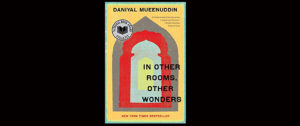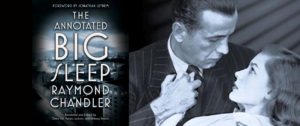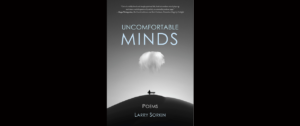This review is authored by James Victor Jordan and Kathy Ballsun
American Pastoral is Philip Roth’s twentieth of twenty-seven novels. It was published in 1997 and won the Pulitzer Prize the next year. It has 520 reviews on Amazon, mostly five-star but the novel also has a few snarky one- and-two-star reviews, one of which quipped that American Pastoral was the best book of all time on glove making. I loved those portions of the book. I dislike reading instruction manuals but love learning new things if they’re presented in an interesting way. Roth’s research and descriptions are awesome. So I enjoyed learning about glove making as those passages are organically woven into the novel. Throughout the novel the gloves allude to themes both actual and metaphorical. I suppose the glove-making-complaining reviewer would have denigrated Moby Dick as being the best book of all time on cetology, which indeed it is most likely.
A fair question would be, why a new review of American Pastoral now? We begin to answer that question by asking, what makes a novel worthy of induction into the canon of English literature, as American Pastoral has been? Is it because it’s well written? American Pastoral earns this accolade, though some have argued that the interior monologues of its protagonist, Seymour “Swede” Levov, border on endless circuity. It’s our view that the novel examines the thoughts, emotions, and convictions of the Swede from numerous nuanced perspectives without becoming repetitive and that this is a tremendous accomplishment that should be especially appreciated in our time of evolving collective social impatience epitomized by the Twitter limit of 140 characters. But despite the impatience of those unwilling or unable to summon the concentration to absorb what American Pastoral has to say, professional critical praise of its prose has been near universal.
A novel reaches the canon when there is a predominant and scholastic view that its story transcends the era in which it takes place or is told. In this review we observe a present-day example of how, despite the passage of two decades since it was written and five decades since the time in which it is set, American Pastoral proves to be such a novel.
By way of example, consider The Adventures of Huckleberry Finn. Mark Twain’s masterpiece is considered a classic of American literature because, among other things, it’s a timeless story of the inhumanity of slavery and the humanity of slaves. And it is obvious in this time of white supremacists marching in Charlottesville, that the message of the evils of racial oppression in Huck Finn remains, most unfortunately, relevant today, worthy today of literary examination.
Hence a viable review that argues that American Pastoral deserves its place in the canon needs to ask and answer: what is it about the Vietnam-War-era story Philip Roth tells in American Pastoral that makes it relevant today? This is a question we answer in this bifurcated review. The first part of the review is a conceptual analysis. The second part of the review tests the arguments in the first part by discussing the novel in terms of the development of its characters, primarily the Swede, as they are revealed within progressive scenes as the novel unfolds.
At the core of American Pastoral is an act of homicidal violence, a bombing meant to protest the Vietnam War committed by sixteen-year old Merry Levov, the only child of the Swede and his wife Dawn. As a result of this tragedy, Roth deftly shows the Swede transitioning through the five stages of grief: denial, anger, depression, bargaining, and to some extent—but not completely—acceptance of the fact that his dear, brilliant, beautiful, beloved, stuttering and rebellious teenager becomes (eventually) a serial killer.
American Pastoral imagines the repercussions suffered by a parent—a vet, an entrepreneur providing scores of jobs in the inner city of Newark, devoted husband, a civic leader—whose child in the Vietnam War era becomes (in modern parlance) a terrorist. But isn’t the Vietnam War and its protestations, its era of social unrest and distrust of government old news? Post 9/11 we have witnessed Americans—young adults—becoming radicalized in a manner not dissimilar to the radicalization of Merry Levov and the underground bombers protesting the Vietnam War.
And what of those middle-class parents—proud Americans, solid citizens—of sons and daughters who become terrorists today? Are the experiences of those parents different in substance than the tribulations of a parent suffering as the Swede and Dawn Levov did in an earlier era? The answer is that the similarities are remarkable if not virtually identical. As the fictional loss and related experiences of the Swede and Dawn is a story terribly relevant today, American Pastoral meets the criteria of contemporary relevance.
As the passage of years provides new and deeper ways of understanding the Vietnam-War-protest generation, a current review American Pastoral is necessary and warranted.
Some have said that American Pastoral is Roth’s critique if not an outright indictment of the generation of teens and twenty somethings who either protested the Vietnam War or who rioted, burned, and pillaged inner cities in that time: the late 1960s to the early 1970s. Those groups the protestors and the rioter) overlap but mostly they are distinct. Few Americans exercising their First Amendment rights to protest the Vietnam War were looters, rioters, or bombers.
Another theme in American Pastoral is the sexual mores of the times. This is presented in several passages, but perhaps, with respect to the Swede’s generation of the World War II era and Merry’s Vietnam War era, nowhere is the generational gap between shown more vividly than in the scene where Rita, ostensibly Merry’s friend after the bombing, comes on to the Swede by lying on a hotel room bed, raising her spread legs to her knees to reveal that beneath her miniskirt she’s not wearing underwear. The Swede has met Rita in the hotel room at her suggestion as a place to meet where the Swede can give her $10,000 for Merry.
Although the Swede has brought the money with him, Rita doesn’t talk about the purpose of his visit. Instead after raising her knees she urges the Swede to fuck her. It’s commonly understood that rape isn’t about sex, rather it’s about power. And to this reader, Rita’s lude behavior sure felt like a power play. But her intensions aren’t entirely clear, as no part of the story is told from her point of view. But her actions, whether malicious or merely sexual, represent the free-love generation of Merry and her contemporaries. The Swede never looks between Rita’s legs, willing himself not to take his eyes off her face. He runs from the hotel room, leaving the $10,000 behind. Like the great author he is, he does not editorialize, doesn’t tell the reader what he thinks the reader should think.
Just as one cannot reasonably characterize Merry’s generation based upon bombers and looters of the time, so one cannot, without more, characterize the sexual mores of her generation from Rita’s hotel room behavior. But there is more as Roth writes another brilliant scene depicting what could be seen as differences in generational attitudes about sex. But the generations in this later scene include the Swede’s generation but the contrast is to his parents’ generation.
In the final (and lengthy scene), this difference between generational attitudes about sex arise during a hilarious dinner-party discussion—largely a diatribe by the Swede’s father, who argues in favor of condemnation of the recently released adult film, Deep Throat. As we see attitude contrasts among three generations, with each in one fashion or another expressing its values, it cannot be reasonably said that Roth is taking sides.
Further, expert opinion on how fiction works from Henry James to James Wood would not agree that Roth as author of American Pastoral denounces the Vietnam-era generation because there is no evidence, a passage or passages in the novel, that states, let alone suggests, that the story is a condemnation of an entire generation, just as there is no passages in Moby Dick that evidences that Captain Ahab was an archetypical whaling ship captain. To say that American Pastoral critiques a generation would be akin to saying that The Godfather critiques all Sicilians.
Henry James also opined that while a narrator, first or third person, can properly be biased in the telling of a story, the author must be neutral. This view cannot be said to apply to a polemic, such as The Jungle or The Grapes of Wrath. But American Pastoral is not a polemic, it is realistic fiction about a father devastated by his daughter’s participation in a violent subculture, including a fascinating inside view of Merry’s deeply disturbed personality. It is a triumph of realistic literary fiction that is as relevant today as it was when it was first published.
To explicate our views, to test our categorical analysis, we discuss below passages we see as critical to understanding the Swede. We note at the outset of this portion of the review that many of Roth’s novels, the later ones in particular, are organized by the narrator Roth chose to tell the story. Roth’s novels are, therefore, grouped to include the Zuckerman Books, the Roth Books, the Kepesh Books, the Nemeses Short Novels, and miscellany. The narrator of the Zuckerman books is one Nathan Zuckerman, a writer. American Pastoral is one of the Zuckerman books. Some would argue that Zuckerman is a Roth alter ego. That, however, is a topic beyond the scope of this already lengthy review.
We organize our discussion of the text under three headings: The Hero, Heroic Denial, and The Fall After the Fall.
I. The Hero
Early in American Pastoral, Zuckerman discloses that the Swede was his childhood hero and acknowledges the limited ability of an author to capture the essence of an individual, even an imaginary one. Despite his own misgivings, Zuckerman’s fascination with the Swede irresistibly lured him into recounting the Swede’s life and bearing witness to the fall of an archetypical American hero. Zuckerman’s observation also serves as a caution to anyone who reads a discussion about the Swede, including his own.
From the very first pages, Zuckerman intimates that all may not be what it seems with the invincible Swede. Even so, Zuckerman describes the Swede as a representation of the conventionally idealized American male, the critical center of the grand American myth. With his physical prowess and his blond good looks, the Swede was set apart from other members of his Jewish community. He was regarded as god-like, “an Apollo”. From his boyhood until his world was ripped apart, the myth of the Swede remained intact.
Although the shadows existed, the events of the Swede’s life appeared to be almost a reflection of his physical perfection. The Swede imagined himself to be Johnny Appleseed sprinkling apple seeds as he tromped through the bucolic countryside. He fulfilled part of his American dream by purchasing an old and impregnable stone house, his fortification against unpleasantness and discord. His lived an “optimistic and privileged” life. He married a Catholic beauty queen, Dawn, and although in later life she strenuously objected to being objectified as a beauty queen. The Swede saw and loved the multiple facets of Dawn’s character and achievements, yet on some level he clung to his beauty queen image of her. She helped the Swede fulfill another aspect of the American myth, that of the handsome and wealthy young couple. “Out of guilt at his own good fortune [finding the American dream without struggle?], he consistently submitted to Dawn’s wants.”
II. Heroic Denial
The Swede had a simplistic faith in his ability to manage whatever challenges life presented. “He could endure anything, inside and outside.” He was “reasonable, enlightened, and tolerant.” He wanted to be a “bulwark of duty and an example of an ethical and moral life.” “He had a fatal attraction to duty and responsibility.”
Although the Swede did suffer internal discontent and distress from time to time, he hid his misgivings from the world under his “insentient” external, and from himself by a self-imposed myopia that blurred and buried the more unpleasant aspects of the dream. The Swede “had no cause to be introspective”, and for much of his life, he could hold both his feelings and exterior challenges at bay. He avoided confrontation. He “clung to order and calm”. With minor hitches and a few bumps, he managed to maintain his fairy tale, that is, until his daughter Merry literally blew his life to smithereens. “At all costs, he kept chaos at bay. Merry was all chaos.”
III. The Fall and After the Fall
Fulfilling an essential requirement of a tragic hero, the Swede possessed a fatal flaw, but his was really a composite of characteristics. The Swede’s instinct was to be nice, to avoid confrontation, not to see and not listen to what was inconsistent with his construct of the American dream, and to maintain his self-restraint. These qualities of respectability and denial and were root causes of the conflagration that consumed his privileged life.
As with the arch-tragic hero, the Swede was unaware of these qualities could cause catastrophic damage. He believed in and relied upon “decorum and a false image of the United States.” He ignored those aspects of his family and work that were distressing and potentially destabilizing, those that were inconsistent with his views and beliefs. “He was unable to distinguish between cause and effect, so his fallback was tolerance.” “He never showed anything; no one knew who he was. He was unrevealed.” He was afraid of showing the beast and was incapable of revealing himself.” Zuckerman wrote that “this was the tragedy of a man not set up for tragedy, a man who had never asked why.” His fall was compared to Adam’s expulsion from paradise.
Despite his every attempt, he lost control. Stubborn to a fault in defending his worldview, his fallback position was to use his money, his intellect, and his force of character to confront life challenges. As Merry transitioned from her mother’s milkmaid to stuttering rebellious teen, he arranged access to the best professionals to help cure her stuttering. He ignored the root causes of her not-so-silent railings again his perfection, his impenetrable exterior.
Brutal assaults upon his life and insular perspective occurred most vividly through Merry. He could not control her, make her fit within his world.
Unlike his wife or his brother Jerry, he lacked the courage to view his circumstances without filters and to speak uncomfortable truths. Both Merry and Jerry sensed that a disconnect existed between Swede’s placid god-like exterior and his repressed emotions. Although Merry defied him by acting out, both issued blunt challenges for him to find and speak the truth and to show his “inner beast.”
Heroes fall when life presents them with more than even they can bear. The Swede was constantly aggravated by his impotence in controlling Merry; he could not make her fit within his world; he could not silence her demands that truth be spoken. Intolerable, heart-rending, and stunning events that occurred within one twenty-four-hour period caused the Swede’s fall. During that one day and night, he: found Merry who with exquisite quiet shook his very being; witnessed his wife committing adultery; and was the recipient of Jerry’s vitriolic condemnation.
Those twenty-four hours shocked him into abandoning “what appeared to be the good life to get down to his true self: a wholly deluded fuck-up.” “Someone who was abnormal because he was a stranger from real life.” “He confessed that he did not know where the truth lay even though he was seeing more possibilities.” With the entire enterprise of his life shattered, the Swede ranted about “his, and everyone’s lack of control” and that “all live under power of something demented.” Reflecting his intense despair, he spoke his truth: “…all was chaos.” He understood the “battering ram that was the world.”
Once a classic hero has an epiphany that enables him [the hero is almost always a male] to understand some ultimate truth, the hero usually dies. Although the Swede lived, he could not continue to do so with such elevated understanding. Yet something in the Swede had changed. He managed to create some type of understanding with Merry and continued to visit her until her death.
The rest was too much. In reaction to the shattering disorder that had ruptured his life, the Swede did what he knew best, he retreated to his old comfort level. He created another “perfect” and idealized reality, a new blond, younger “perfect” wife with three sons good for bragging rights. But he could not hold onto the ability to speak the truth. At the dinner that he arranged with Zuckerman, the Swede did not tell Zuckerman about Merry. On some level, the Swede might have known that his restructuring was no more than the sheerest of defenses against chaos. Yet no one, not even the heroic Swede, could live in a world where chaos reigned unabated.

